The places of worship in old Calcutta, and what we learn from them
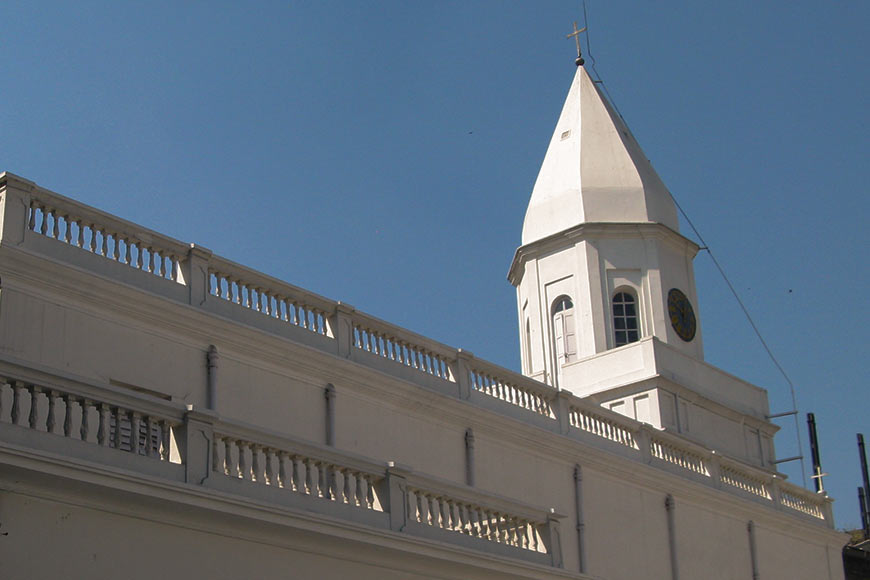
Armenian Church
“Our next walk will begin from Old China Bazar Street.” That is how the last edition of our walk around Kolkata had ended. As promised, we begin this weekend’s walk from one of the city’s oldest quarters, one that even predates the arrival of the British in some cases. The easiest starting point is the General Post Office or GPO, from where you can walk down India Exchange Place and turn left onto Radhabazar Street, which in turn emerges into Old China Bazar Street. This bazar was once called Radhabazar too, and belonged to an old Armenian family called Apcar. The name Radhabazar comes from Radhanath Tagore, whose family were the original owners of the land.
According to some accounts, the bazar dates back to as early as 1757, and the name ‘China Bazar’ came from the fact that it dealt primarily in several kinds of China crockery and other Chinese goods. Today, of course, there is almost nothing that this bazar doesn’t sell, and we mean that literally. Of course, a lot of the business here is done wholesale, and not all shops sell to individual small buyers.
Point A - Armenian Church
The Armenians arrived in Calcutta almost at the same time as Job Charnock, that is, at the end of the 17th century. Most of them came not from the relatively modern nation of Armenia, but from West Asia. Of course, they were by no means the first foreigners to land on these shores. The Portuguese had superseded both the Armenians and the British, entering Bengal in the 16th century, while the Dutch had settled in Chinsurah around 1610.
Before the British grew roots here, the Armenians were easily the most prosperous community in Calcutta, thanks to their superb business sense and financial acumen. Even today, if you trace the history of some of the city’s oldest and most magnificent mansions, chances are that you will discover they once belonged to an Armenian family by the name of Chater, Apcar, Galstaun, and the like.
Their Church of the Holy Nazareth is approached from Old China Bazar Street, which crosses Canning Street and turns right into Armenian Street. More commonly known as the Armenian Church, it was originally built of wood in 1707, but destroyed in a fire just a few years later. Rebuilt from scratch with brick and mortar in 1724, it predates St John’s Church by several decades. Some of the most interesting things about the church are its old gravestones, many of them with Cyrillic (the alphabet used in Russian and a few other languages) inscriptions.
Also read : Esplanade, the beating heart of old Calcutta
Standing among these is the famous - or controversial, depending on your point of view - gravestone of Rezabeebeh, wife of ‘the late Charitable Sookias’, who died on July 11, 1630. If the date on the gravestone is to be believed, then this is the oldest Christian grave in Kolkata. Which begs the question, if the church itself was built in 1707, from where did this tombstone come? And why is the inscription in English and not Cyrillic?
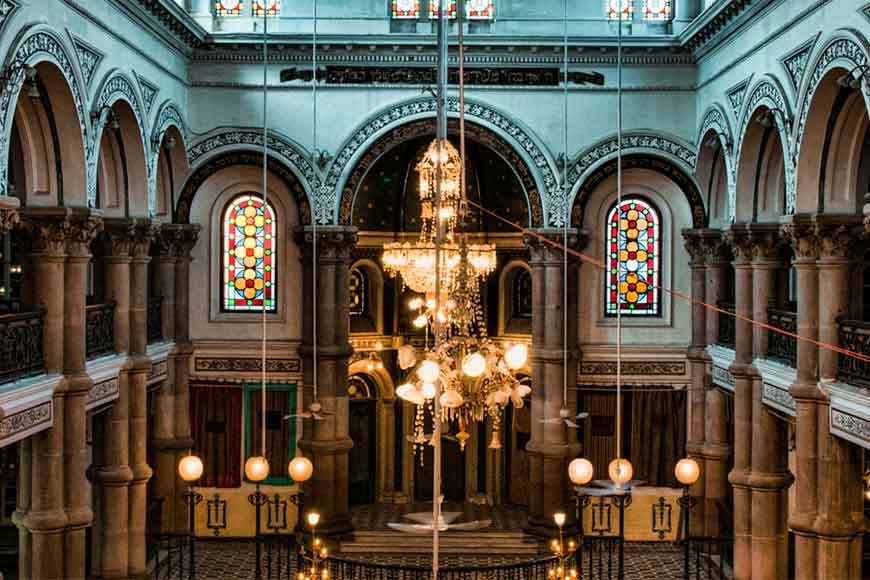
Point B - Maghen David Synagogue
Retrace your steps back to Canning Street (or Biplabi Rashbehari Basu Road), and walk to the corner where it meets Brabourne Road to the east. Right on the intersection of the two roads stands the Maghen David Synagogue. This is a splendid representation of Calcutta’s once thriving Jewish community, who arrived in India many centuries ago, though their settlements were confined primarily to western India. Arriving in Calcutta around 1790, they quickly established themselves as astute business people and their prosperity grew in leaps in bounds. Post-Independence, most of them migrated to Israel, and their numbers in the city have now declined to just a handful.
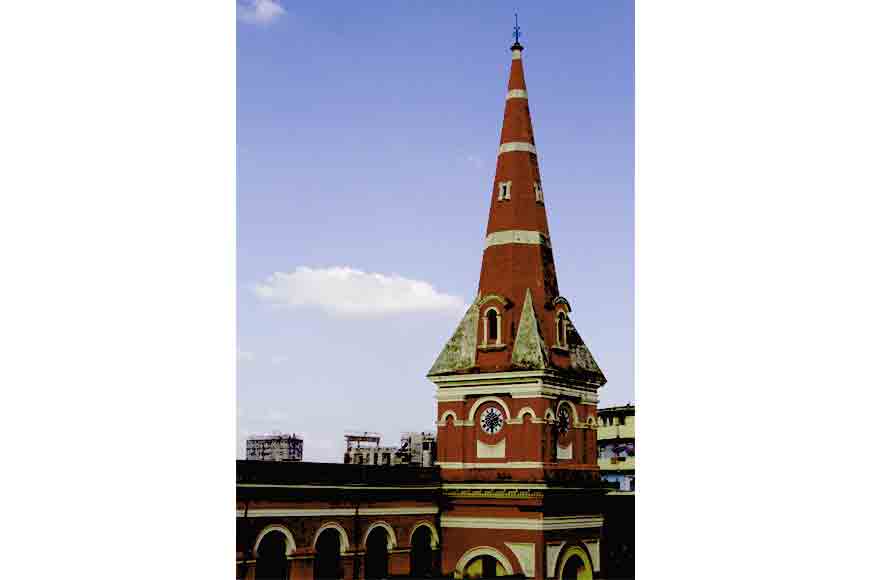
The site where Maghen David now stands was the location for the Neveh Shalom synagogue, built in 1826. Parts of it can still be seen, though it made way for Maghen David in 1884, coinciding with the time when Calcutta got its first Jewish sheriff, the redoubtable Elias David Joseph Ezra. The building has been taken over by the Archaeological Survey of India, but you can photograph it from the outside, and it is open on Saturdays, the Jeiwsh sabbath.
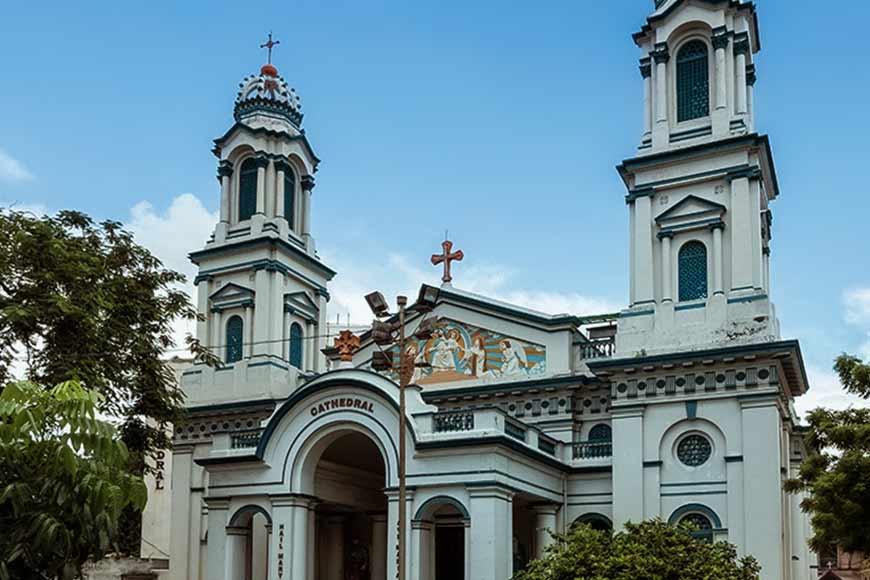
Point C - Portuguese Church
Cross Brabourne Road from Maghen David, and you come upon the Portuguese Church, formerly known as the Cathedral of the Holy Rosary. Set up in 1747, this was Calcutta’s first Catholic place of worship, though some accounts state that it stands on land originally occupied by a chapel of the Order of St Augustine in 1700. The Catholic church had to suspend services for some time in the 18th century owing to tensions with the Anglican British administration, but today serves a fairly large congregation.
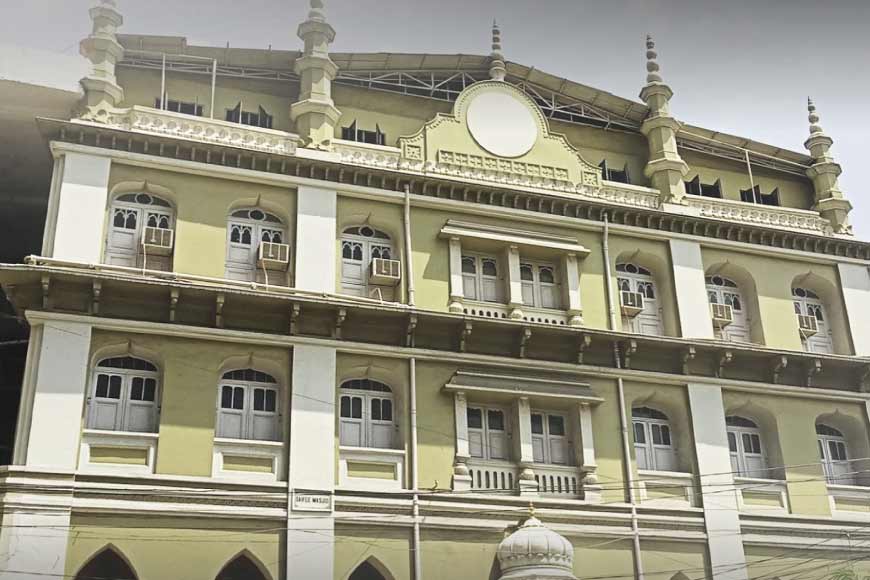
Point D - Saifee Mosque
Walk back past the Canning Street crossing and you will come upon the mosque, belonging to the Bohra Muslim community. Apparently named after one Saifuddin, the mosque is just about 130 years old, which makes it younger than the buildings we have visited so far. However, it is interesting for its architecture and colouring.
During our short walk, we have already visited a couple of churches, a synagogue, and a mosque, indicating the fascinating cultural melting pot that was old Calcutta. Next week, we will continue on this route, taking in a few more places of worship.












